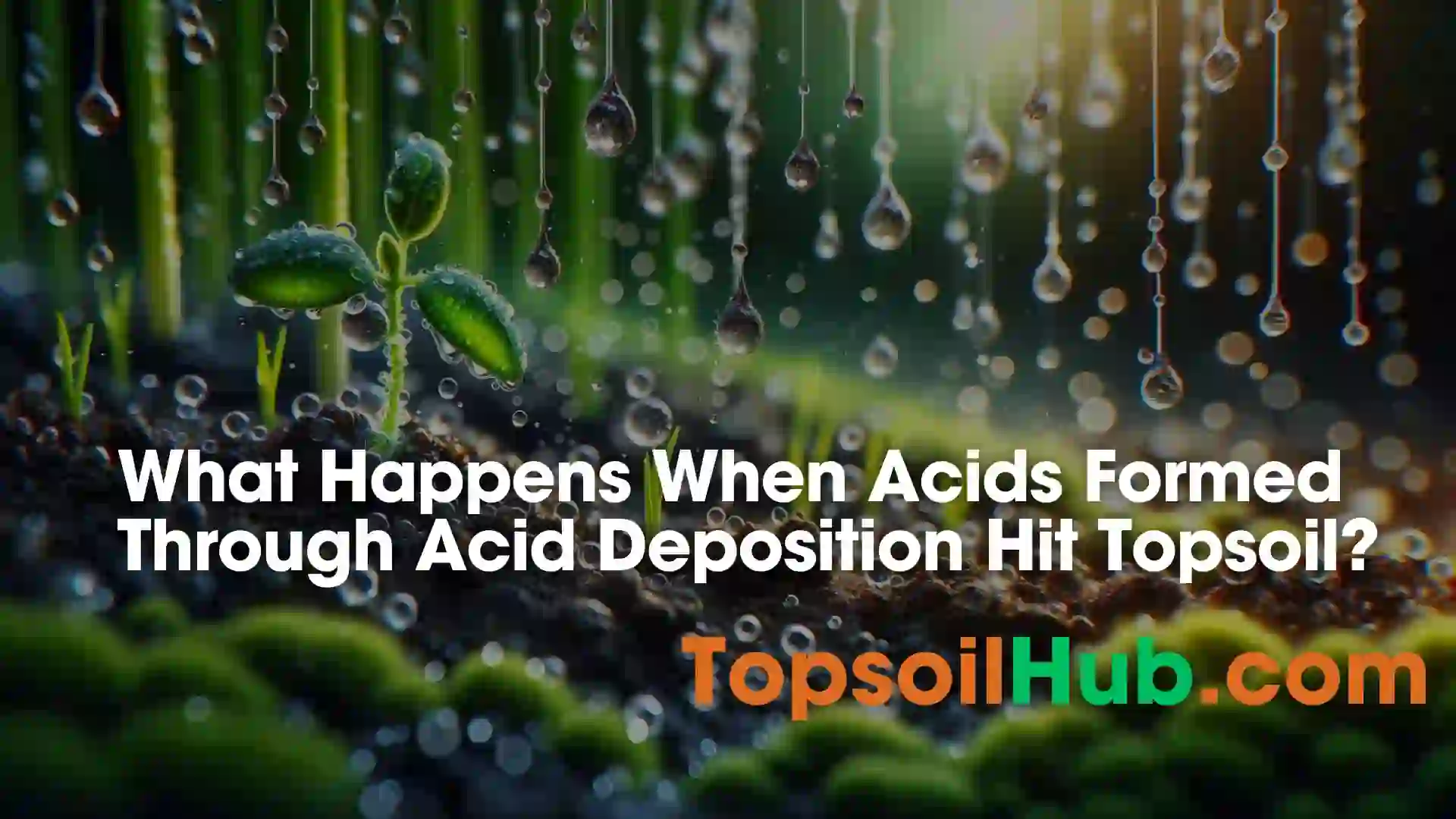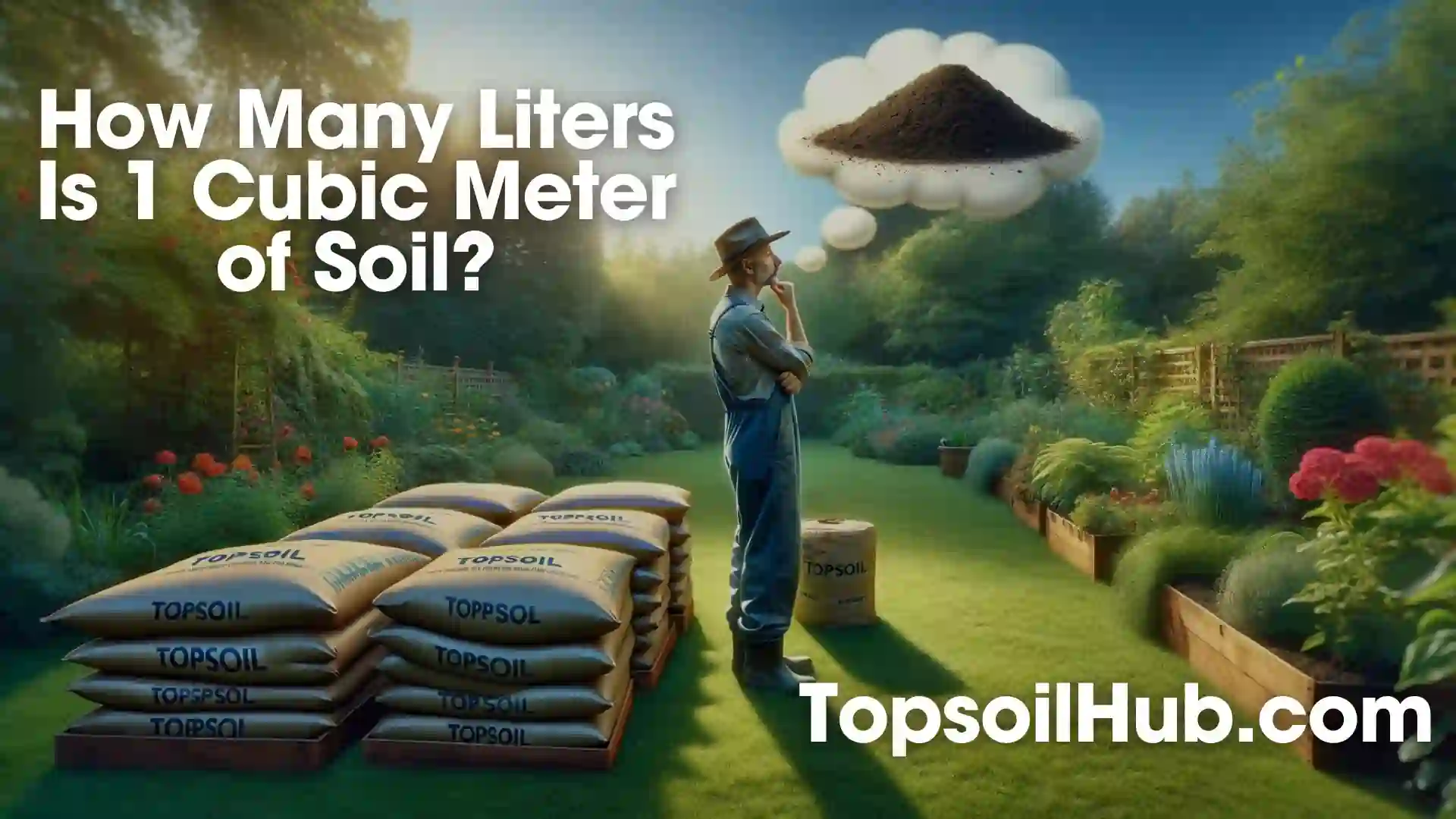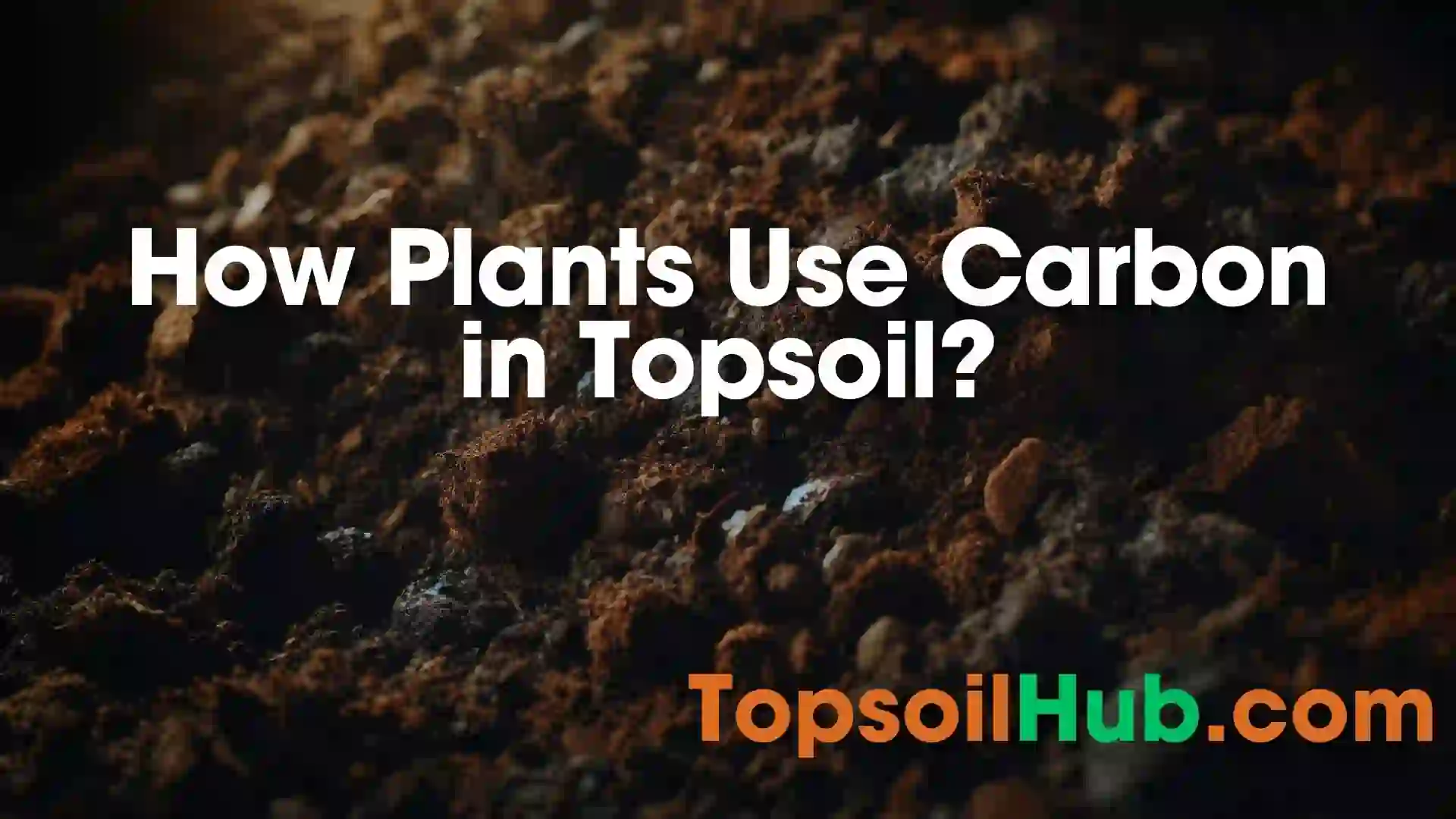Does Topsoil Contain Humus?
If you are a gardener, farmer, or landscaper, you might be curious about the topsoil and subsoil and how they affect the growth and health of your plants. You might have also heard of humus, a dark organic matter that is essential for soil fertility. But what is humus, and does topsoil contain humus? In this blog post, we will be answering just that and explaining why humus matters for your soil and plants. Let’s get started!
Does Topsoil Contain Humus? Quick Answer
Yes, topsoil contains humus, but the amount varies according to the soil’s type and quality. Humus is the dark organic matter in soil that is formed by the decomposition of plant and animal matter. It is rich in nutrients and retains moisture in the soil. Humus is essential for plant growth and soil health. The more humus found in topsoil, the more nutrient-rich the topsoil and the better the conditions for growing plants.
You can test your topsoil for humus by using a soil test kit or by observing its color and texture. You can also add more humus to your topsoil by applying organic amendments such as compost, manure, leaf litter, or mulch.
What Is Humus?
Humus is the substance that is left over after plants and animals have undergone a long process of thorough decomposition done by earthworms, bacteria, fungi, and other microorganisms. It is found in the top few inches of soil. The color of the humus is brown or black, and it has a loose, crumbly, and spongy texture.
Humus contains the elements necessary for plant growth: nitrogen, phosphorus, sulfur, calcium, magnesium, and potassium. Depending on the original plant and animal material, the chemical composition of humus varies.
Benefits of Humus to Topsoil
1. Enhances Soil Properties
Humus makes the soil better at holding onto water and nutrients. This helps plants get the steady supply of water and food they need to grow.
Adding humus means the soil doesn’t dry out quickly and keeps its nutrients longer. This is especially important in dry weather or in sandy soils that don’t hold water well.
2. Supports Plant Growth
Humus is good for plants because it helps roots grow deep and strong. Strong roots help plants absorb more nutrients and water.
This leads to healthier and more robust plants. Also, when there is plenty of humus, plants are more likely to survive and thrive, even when growing conditions are not ideal.
3. Boosts Overall Soil Health
Adding humus to soil makes it healthier and more able to support a variety of plants. Healthy soil with lots of humus means a garden or farm can produce lots of different plants successfully.
It also helps the soil stay in place, reducing erosion. This keeps the environment healthier and ensures farms and gardens can be used for a long time.
The Impact of Low Humus Levels
1. Decline in Soil Quality
When there isn’t much humus in topsoil, the soil’s quality goes down. This makes it hard for plants to grow well and affects how much food farmers can grow. Humus helps keep soil healthy by providing nutrients that plants need.
Without enough humus, the soil can’t support strong and healthy plants, and the plants might not grow as big or as fast.
2. Reduced Fertility
If humus levels are low, the soil becomes less fertile. Humus is important because it holds nutrients that feed the plants. Without enough of it, these nutrients can wash away or not be available to plants.
This means the plants won’t get the food they need to grow strong and healthy, which can lead to smaller plants and less food grown.
3. Poor Water Retention
Humus makes soil better at holding water. With less humus, the soil can’t keep as much water. When it’s hot or dry, this can be a big problem because the plants get thirsty and might not survive. If the soil can keep water well, plants have a better chance of doing well, even when it’s not raining much.
4. Increased Erosion Risk
Soil with not enough humus is more likely to get washed or blown away. Humus acts like glue, holding soil particles together. When it’s missing, soil can start to erode, which means the top layer that’s good for planting can disappear. This makes it harder to grow plants and can ruin the land over time.
Keeping enough humus in the soil is very important. It helps make sure that plants can grow well and that the soil stays healthy.
By adding things like compost to the soil, farmers and gardeners can help build up the humus. This leads to better-growing conditions, healthier plants, and more successful farms and gardens.
Conservation Strategies for Topsoil and Humus
Maintaining healthy topsoil and increasing its humus content is key for good soil. Here are some easy strategies to help:
1. Cover Cropping
Cover cropping means growing certain plants that help the soil. These plants, like clover or rye, act like a natural blanket for the soil. They prevent the soil from eroding with wind or water. When these plants die, they decompose and turn into organic matter that adds more humus to the soil.
This makes the soil better at holding water and nutrients, which is great for any plants grown afterwards. It’s a simple way to keep your soil healthy and ready for farming.
2. Reduced Tillage
Reduced tillage is about not disturbing the soil too much. When farmers prepare land for planting, they often till, or stir up the soil. This can hurt the soil by breaking its structure and lowering humus levels.
If the soil is not tilled much, it keeps its structure and stays healthy. This method helps keep the soil moist and rich in nutrients. It makes for a stronger foundation that supports all kinds of plant life.
3. Using Organic Amendments
Adding organic materials like compost, manure, or leaf mold to the soil can boost its humus content. These additions are packed with nutrients that help plants grow. They also help improve the soil’s structure, making it looser and more fertile.
As these materials break down, they slowly increase the amount of humus in the soil. This not only makes the soil richer but also keeps it healthy for a long time. It’s an effective way to enrich the soil naturally.
These methods are straightforward and effective for keeping your soil rich and productive. By following these steps, you can ensure that your soil is always ready to support healthy plant growth and sustain agriculture.
Measuring and Increasing Humus Content
How to Measure Humus Content
To find out how much humus your soil has, you can use two easy methods:
- At-Home Tests: These tests are simple. One common way is the jar test. You just need a clear jar, some soil from your garden, and water. Mix soil and water in the jar, shake it well, and let it sit. After a while, the soil layers separate, and you can see the organic layer. This test is quick and helps you understand your soil better without any special tools.
- Laboratory Analysis: For a more detailed check, you can send a sample of your soil to a lab. The lab will tell you exactly how much humus is there and what else your soil contains. This is the best method if you want to know what your soil needs to help your plants grow better.
Ways to Increase Humus Content
If your soil needs more humus, here are some straightforward steps to improve it:
- Compost: Adding compost is an easy way to get more humus into your soil. Compost is made from decayed organic materials like leaves and kitchen scraps. It breaks down slowly, adding nutrients and organic matter to the soil. Putting compost in your garden a few times a year can make your soil much richer.
- Manure: Manure is another great source of organic matter. Make sure it’s well-rotted before you use it so it doesn’t hurt your plants. Manure makes the soil richer and helps it hold more water, which is very good for your plants.
- Green Manures: You can also plant green manures, like clovers or alfalfa. These plants are grown and then mixed into the soil while they are still green. They add a lot of organic matter to the soil. Green manures help keep the soil healthy by preventing erosion and stopping weeds from growing too.
These steps will help you build up the humus in your soil over time. More humus means healthier plants and a better garden. Just keep adding organic materials like compost and manure, and you will see great results.
Sources of Humus for Topsoil
Humus is very important for improving the quality of topsoil. It helps make the soil better for plants. Here’s how you can increase the humus in your soil:
1. Natural Decomposition
Humus forms when plants and other natural materials break down. This happens when tiny organisms in the soil eat these materials. This process slowly adds important nutrients back into the soil, which helps plants grow strong and healthy.
By simply letting plant waste decompose, you can naturally improve your soil without much effort.
2. Adding Organic Amendments
Farmers and gardeners can add different kinds of organic materials to the soil to increase its humus content. Here’s what they can do:
- Compost: You can make compost by piling up kitchen scraps, yard waste, and other organic stuff and letting it decay. This turns into a rich material that’s good for your soil. Adding compost to your garden helps the soil hold more water and gives plants a big boost of nutrients they need to grow well.
- Manure: Animal poop, especially from farm animals, is very rich in nutrients. When mixed into the soil, it breaks down and becomes part of the humus, making the soil richer and better for planting. It’s an effective way to improve soil fertility and support healthy plant growth.
- Other Organic Materials: Things like fallen leaves, grass clippings, and straw can also be added directly to your garden. As these materials break down, they turn into humus. This not only adds nutrients but also improves the soil’s structure, making it easier for roots to grow and for water to penetrate.
Using these simple methods, anyone can make their soil healthier and more fertile. This leads to better plant growth and more productive gardens and farms.
Testing Soil for Humus Content
Understanding the humus content of your soil is key to knowing how fertile it is and how well it can support plant growth. You can find this out by doing a few simple tests. Here’s a step-by-step guide:
1. Simple pH Test
The pH level measures how acidic or basic your soil is. Soil pH affects how well plants can take up nutrients and how well organic material breaks down into humus. To test this, you can buy an easy-to-use kit from a garden store.
Just follow the kit’s instructions to take a soil sample and find out its pH. If the pH is too high or too low, it might stop the soil from turning organic material into humus properly. By checking the pH regularly, you can make sure your soil is always ready to support humus formation.
2. Nutrient Profile Analysis
After checking the pH, you should look at what nutrients are in your soil. This tells you about the levels of important nutrients like nitrogen, phosphorus, and potassium. You can test these nutrients at home with a kit, or you can send a sample to a lab for more details.
Knowing which nutrients your soil has a lot of and which it lacks helps you choose the right kind of organic matter to add.
This way, you can improve humus content effectively. It’s a crucial step for making sure your plants have all they need to grow strong and healthy.
3. Comprehensive Soil Analysis
For a complete look at your soil’s health, you might want to get a full analysis done by professionals. Send a soil sample to a lab, and they’ll check many things, including its texture, structure, organic matter content, and even how many microbes are in it.
With this information, you can really tailor how you take care of your garden or farm to increase humus content best. This detailed check-up is great for solving any big problems with your soil, ensuring it can support a lot of life and stay fertile.
Testing your soil in these ways gives you important information about how to manage it better. Regular tests help you make smart choices for keeping your soil rich in humus. This not only helps your plants grow better but also keeps your gardening or farming sustainable.
Conclusion:
In conclusion, yes, topsoil contains humus. Humus is the dark, crumbly material made from decayed plants and animals. It makes the soil better for plants to grow. Humus helps the soil hold water and nutrients that plants need.
Adding compost, manure, or cover crops can increase the amount of humus in your soil over time. This leads to healthier plants and better gardens or farms.
To keep your soil in good shape, test it regularly to see if it has enough humus. Follow tips like composting and avoiding tilling the soil too much. Taking good care of your soil’s humus levels will help your plants thrive and grow strong.
Start enriching your soil with humus today! Visit your local gardening store or nursery to get the supplies you need for composting or cover cropping. Your plants will thank you for providing them with a nutrient-rich, humus-filled environment to flourish







